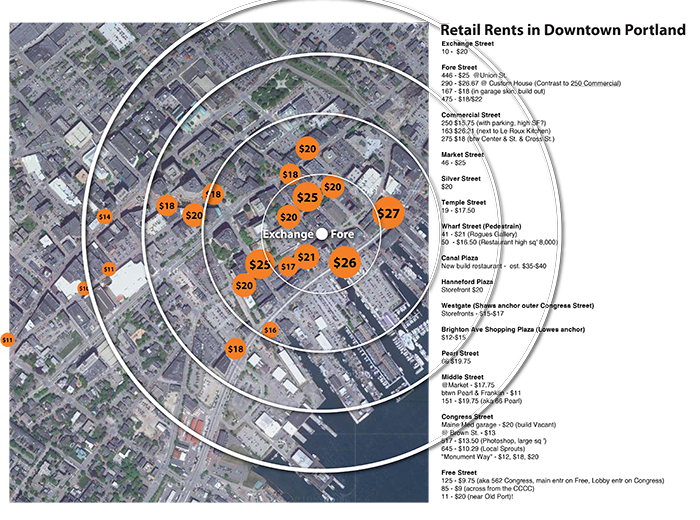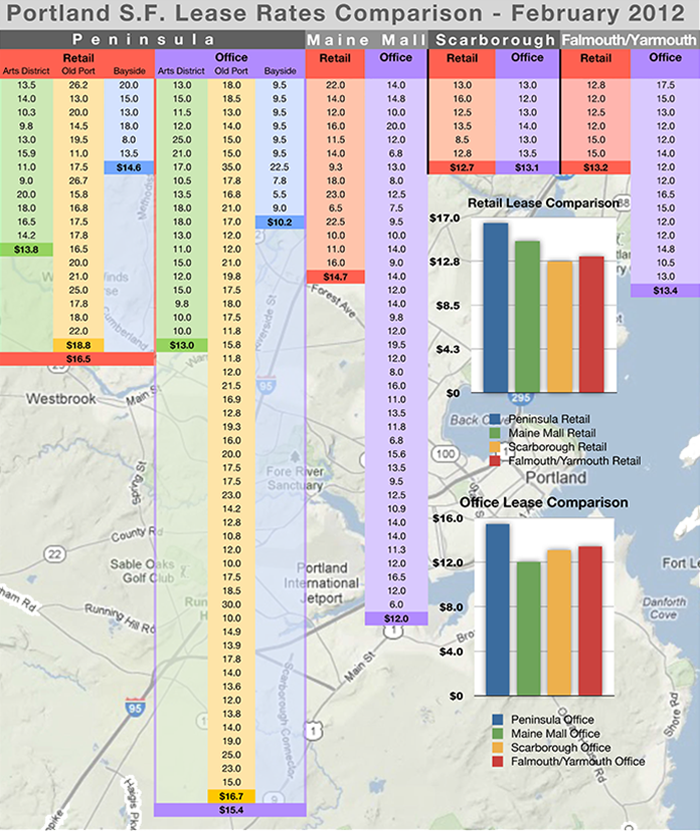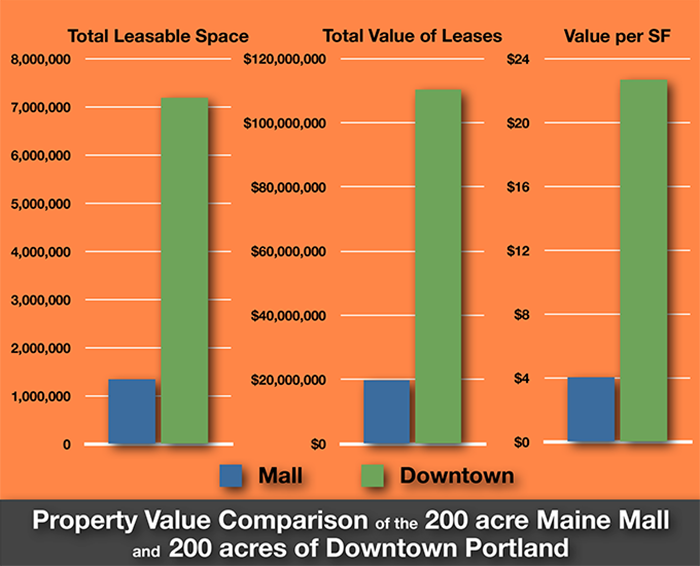Correlation of Pedestrian Traffic to Land Values In Portland Maine
by Zack Barowitz & Johnathan Owens LSA
At the onset of this study I wanted to dispel the notion that commercial real estate needs parking to be viable. I looked for a correlation between foot traffic and a healthy climate for commercial real estate, which brings not only jobs and revenue but a vibrancy to urban life. Annual square foot rents are a strong indicator of the economic viability of a location. Data from the Boulos Company provided a large sample of retail and office space in Portland Maine and surrounding suburbs. We found the strongest rents to be in the Old Port section of Portland which is also the most heavily pedestrian areas. While shopping malls and strip development command rents roughly equal to those found in the Portland Arts District and Bayside neighborhood it does not tell the whole story. The key is in the mix, multiple uses compliment one another while single use in a sea of parking puts stress on the infrastructure, climate, and consumer's fuel bills. Mall shops tend to be single story, single use, and offer parking as the only amenity. Whereas downtown provides a far richer mix of residential, commercial, and retail–with very limited parking.
As a result the actual land values are far greater (well over 400% greater) in dense urban areas (i.e., downtown) with scant parking than in mall and strip development.
(click on image to download PDF)


